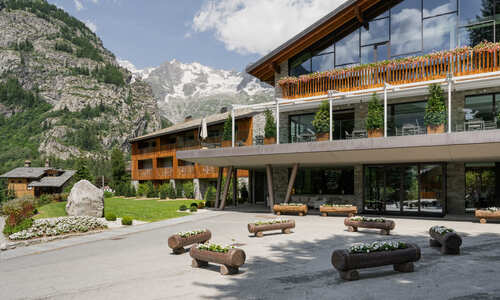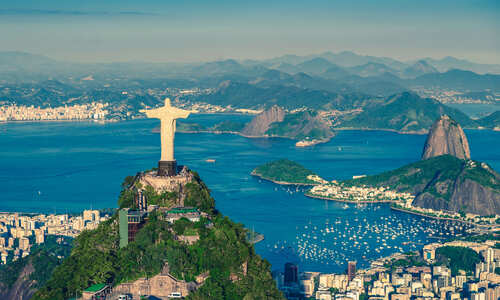Article content
10 July 2024 by Norire Arakelyan
Volcanoes! The very word conjures images of molten lava, billowing smoke, and raw, untamed nature. These awe-inspiring giants have shaped landscapes, inspired myths, and captivated humankind for millennia. But for the intrepid traveler, volcanoes offer something even more thrilling: the chance to witness nature's power firsthand. Below, we embark on a world tour of the top 5 volcano destinations, from the iconic slopes of Mount Etna to the otherworldly landscapes of Chilean Patagonia. Whether you're a seasoned hiker or an armchair adventurer, you'll no doubt be mesmerised by the raw beauty and primal energy of these incredible places.
1. Mount Etna, Sicily
Standing at 3,357 metres, Mount Etna dominates the landscape of eastern Sicily and the city of Catania. With eruptions for at least the past 2,700 years, it has some of the most documented and detailed records of volcanic activity anywhere in the world. In fact, even to this day Etna is known for its frequent eruptions, with eruptions in 2021, 2022 and as recently as July 2024. Activity is concentrated around the summit craters and fissures on its flanks, and eruptions can happen from multiple locations at the same time.
However, despite its fiery reputation, a visit to Mount Etna is achievable. In an afternoon, you can reach the highest accessible point (2,825 meters) and witness the volcano firsthand. Look out for solidified lava flows snaking down the slopes, some reaching right into towns and villages. Eruptions are well-monitored, which means access to certain areas can be adjusted to keep visitors safe. Consider hiking, or enjoy a cable car ride and a thrilling 4x4 bus journey combination to the highest accessible level. You can also take a guided tour around a large, active crater right next to an observatory – a truly unforgettable experience.

Visiting a Mount Etna crater, near the observatory
2. Kīlauea, Hawaii
Located on the Big Island of Hawaii, Kilauea is one of the most active volcanoes in the world. As part of Hawaii Volcanoes National Park, Kilauea is a constantly evolving landscape shaped by fiery eruptions and molten lava flows. It's estimated to be between 210,000 and 280,000 years old, and emerged from the sea roughly 100,000 years ago. Since then, it's been erupting frequently (almost continuously from 1983 until 2018), continuously reshaping the island's landscape. Since 2018, Kilauea's activity has been more sporadic, with bursts of eruptions rather than a continuous performance. It is also one of the best places in the world to witness an ongoing eruption and flow of lava safely.
Due to the diversity of the Big Island, we recommend hiring a car, allowing you the time to explore at your own pace. Molten lava can often be witnessed tumbling into the sea, and the contrasting landscapes of dense jungle valleys fronting white beaches with the stark beauty of the Ka'ū Desert (covering the area of the Kīlauea Volcano) is a sight to behold. There is also the chance to hike to the rim of Kīlauea and see the Halemaʻumaʻu crater. Elsewhere, the Thurston Lava Tube (also known as Nāhuku, just a short drive from Kīlauea) is an incredible 500-year-old natural conduit formed by ancient flowing lava, offering a fascinating glimpse into the geological history of the island. The entrance to Thurston Lava Tube is a short and easy hike through a section of Hawaiian rainforest, providing a nice contrast between the lush vegetation on the exterior and the stark beauty of the inside.

Flowing lava in Hawaii's Volcanoes National Park
3. Þríhnúkagígur, Iceland
Iceland's volcanic nature grabbed international headlines back in 2010. Such was the nature of Eyjafjallajökull's famous eruption, that it lead to the closure of most of Europe's airspace. Any future eruption by Eyjafjallajökull is extremely unlikely to happen for a long time yet, however along the same southern coast, the dormant Þríhnúkagígur volcano offers the unique opportunity to explore its enormous magma chamber.
Typically, after a volcanic eruption, the emptied magma chamber fills with cooling lava that eventually solidifies into rock, awaiting the volcano's next outburst. In some cases, if the chamber is completely drained, the volcano might collapse. However, Þríhnúkagígur defies these norms. Despite its last eruption occurring over 2,000 years ago, neither of these expected outcomes have materialised, leaving scientists baffled.
The best part? It is now possible to visit this dormant volcano. Opened to the public in 2012, a mining-style lift descends into the volcano's depths, allowing visitors to explore this extraordinary natural wonder. Its immense chamber, adorned with vivid hues of red, yellow, green, and blue, created by mineral deposits, is a breathtaking sight. Reaching the volcano involves a short uphill hike suitable for most people with a reasonable level of fitness. However, tours so only operate during the summer months, so be sure to plan accordingly.

Inside the dormant Þríhnúkagígur volcano
4. Mount Bromo, Indonesia
Straddling the Pacific Ring of Fire, Indonesia is home to a staggering 129 active volcanoes. These fiery giants are deeply woven into the fabric of the culture. Locals routinely tell harrowing stories of their run-ins with the mighty natural phenomenon, with tales of escaping eruptions which blanketed their hometowns in shrouds of black ash. In fact the 1883 eruption of Krakatoa is one of the world's most famous examples of the devastation that volcanoes can cause.
In the present day – on the other side of Java – Mount Bromo dominates the landscape of Bromo Tengger Semeru National Park. Last erupting as recently as 2016, its dramatic silhouette and constant activity have made it a top tourist destination within Indonesia, and indeed Asia. Therefore, a visit to this awe-inspiring natural wonder is an absolute must for any traveller exploring the country. Whether you're hiking, to the crater rim, taking a jeep across the volcanic landscapes or witnessing sunrise illuminating the majestic volcano and its surroundings, Mount Bromo is a surreal experience.

Views of Mount Bromo, eastern Java
5. Arenal, Costa Rica
At 5,437 feet and surrounded by lavish jungles, hot springs, and a picturesque lake, Costa Rica's Arenal Volcano – once the country's most active – was renowned for its nightly lava displays. Erupting almost continuously since the 1960s, the volcano captivated audiences with its fiery spectacles until 2010 when it entered a period of dormancy. These days, while the breathtaking lava flows have ceased, the Arenal Volcano National Park remains a captivating destination, not least for its stunning rainforest surrounds. Additionally, visitors can enjoy thrilling adventures like white-water rafting and waterfall rappelling, or simply unwind in the area's soothing thermal pools under a starlit sky.
If you're a keen wildlife spotter, the national park surroundings are also home to an incredible 131 mammal species, including the slow-moving three-toed sloths. You might also catch glimpses of playful spider, white-faced, and howler monkeys, energetic coatis, or curious raccoons. Keep an eye out for the elusive ocelots and jaguars as well – all backed by the spectacular view of the conical Arenal Volcano.

On the foothills of Arenal Volcano






